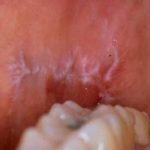
Oral lichen planus is a chronic or recurrent inflammatory disease of an autoimmune nature. Oral Lichen planus is often associated with other diseases including autoimmune disorders such as type 1 diabetes. However, there is no high-level evidence on the frequency of presence of other autoimmune diseases in patients with oral lichen planus.
The aim of this review was to evaluate the current evidence on the prevalence of autoimmune disorders in patients with oral lichen planus (OLP) and their magnitude of association.
Methods
Searches were conducted in the PubMed, Embase, Web of Science, and Scopus databases with some additional records being identified though Google Scholar and searching references of included studies. Observational studies assessing the prevalence of autoimmune disorders in OLP patients were considered. Two reviewers independently selected studies with one reviewer extracting data which was crosschecked by a second reviewer. Risk of bias was assessed using critical appraisal tools for prevalence studies from the Joanna Briggs Institute. Meta-analyses, subgroup, meta-regression, and small-study effects analyses were conducted.
Results
- 153 studies involving a total of 23,327 patients were included
- Meta-analyses for the pooled prevalence and magnitude of association were undertaken (see table).
| No. of studies (patients) | Pooled prevalence (95%CI) | Magnitude of association
[Odds ratio (95%CI)] |
|
| Diabetes mellitus (overall) | 9.41% (8.16. to 10.74%) | 1.64 (1.34 to 2.00) | |
| type 1 diabetes mellitus | 5 (361) | 1.62% (0.03 to 4.66%) | 3.02 (0.12 to 74.90) |
| non-specified diabetes | 116 (17,609) | 9.77% (8.49 to 11.13%) | 1.64 (1.34 to 2.01) |
| Fibromyalgia | 3 (65) | 3.95% (0.07 to 11.17%) | 1.74 (0.06 to 50.43) |
| Gastrointestinal disorders (overall) | 6.16% (2.89 to 10.28%) | 12.38 (2.28 to 67.31) | |
| bowel disease [i.e., Crohn’s disease or ulcerative colitis | 6 (361) | 5.01% (1.07 to 10.85%) | 5.08 (0.24 to 106.80) |
| coeliac disease | 6 (197) | 8.66% (4.71 to 13.43) | 18.44 (2.40 to 141.43) |
| Rheumatoid disorders (overall) | 5.55% (3.05 to 8.63%) | 2.76 (0.80 to 9.53) | |
| rheumatoid arthritis | 11 (1142) | 2.40% (0.77 to 4.65%) | 2.34 (0.34 to 16.13) |
| non-specified arthritis | 8 (2508) | 9.76% (4.49 to 16.59%) | 3.10 (0.61 to 15.61) |
| psoriatic arthritis | 1(155) | 1.94% (0.66 to 5.54%) | – |
| non-specified rheumatoid disorders | 2 (343)
|
8.18% (5.47 to 11.36%) | – |
| Sjögren’s syndrome | 8 (1079) | 2.96% (0.77 to 6.14%) | 4.41 (0.68 to 28.43) |
| lupus erythematosus | 12 (592) | 1.65% (0.10 to 4.35%) | 3.02 (0.12 to 74.90) |
| Dermatological disorders (overall) | 0.89% (0.14 to 2.05%) | 0.95 (0.14 to 6.57) | |
| psoriasis | 7 (1215) | 0.82% (0.04 to 2.20%) | 0.50 (0.04 to 5.54) |
| vitiligo | 3 (136) | 1.83% (0.02 to 5.33%) | 3.05 (0.12 to 76.26) |
| Thyroid disorders (overall) | 7.96% (6.32 to 9.75%) | 1.99 (1.60 to 2.49) | |
| Hashimoto’s thyroiditis | 6 (1158) | 8.60% (3.78 to 14.94%) | 2.23 (1.76 to 2.82) |
| hyperthyroidism | 8 (2965) | 2.84% (1.31 to 4.87%) | 2.11 (1.22 to 3.63) |
| hypothyroidism | 34 (5403) | 8.14% (6.07 to 10.45%) | 1.65 (1.08 to 2.53) |
| non-specified thyroiditis | 5 (658) | 4.19% (0.38 to 10.66%) | – |
| non-specified thyroid disorders | 22 (4992) | 10.74% (7.14 to 14.95%) | 2.50 (1.61 to 3.86) |
Conclusions
The authors concluded: –
Our study demonstrates the existence of a comorbidity between autoimmune thyroid diseases as well as between diabetes mellitus and OLP respectively. Quality of evidence should be upgraded on other autoimmune diseases (fibromyalgia, gastrointestinal disorders, rheumatic diseases, Sjogren’s syndrome, lupus erythematosus, and dermatological diseases) for which the current data do not allow us to know whether they are really associated with OLP.
Comments
The authors registered their review on PROSPERO and searched in a good range of databases for studies of any design assessing the prevalence of autoimmune disorders in OLP patients. While a large number of studies were included it should be pointed out that most of included studies were considered to be of low quality and this needs to be taken into consideration when looking at the findings. Should high quality low bias studies become available in the future the size of any relation ship between any particular disease and OLP could change significantly. While the largest number of studies concerned diabetes there were fewer than 10 studies for 12 of the diseases included. The review very helpfully summarises a large amount of information on the relationship between OLP and a number of autoimmune diseases. Well conducted and reported prospective studies should be conducted to clarify any relationships.
Links
Primary Paper
De Porras-Carrique T, Ramos-García P, Aguilar-Diosdado M, Warnakulasuriya S, González-Moles MÁ. Autoimmune disorders in oral lichen planus: A systematic review and meta-analysis. Oral Dis. 2022 Jan 9. doi: 10.1111/odi.14127. Epub ahead of print. PMID: 35000260.

I was extremely interested in your article. A nurse practitioner incorrectly told me that hypothyroidism was not considered an autoimmune disease. I have suffered with lichen planus for several years.